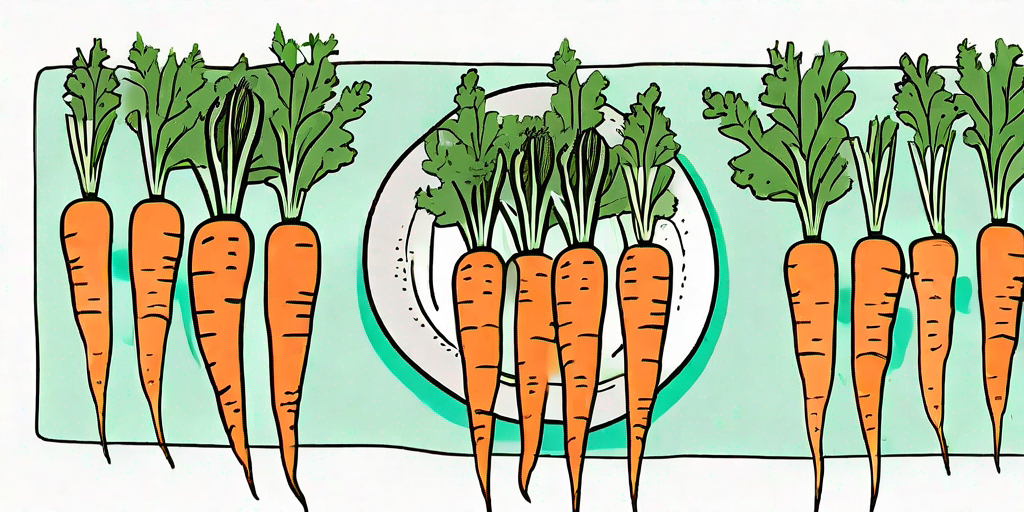
Ah, the humble carrot. A staple in many a kitchen, it's a versatile vegetable that can be roasted, boiled, mashed, or eaten raw. But have you ever thought about where your carrots come from? No, not the supermarket, but the garden. And more specifically, from the seeds. In this comprehensive guide, we'll take you on a journey from garden to plate, teaching you how to harvest and save carrot seeds like a pro. So, grab your gardening gloves and let's get started!
Understanding the Life Cycle of Carrots
Before we dive into the nitty-gritty of seed harvesting, it's important to understand the life cycle of a carrot. Unlike annual plants that complete their life cycle in one year, carrots are biennial plants. This means they take two years to complete their life cycle. In the first year, they grow the delicious root that we all know and love. In the second year, they flower and produce seeds.
Knowing this, you might be wondering how you can harvest carrot seeds if they only produce them in the second year. Well, that's where a little bit of patience comes in. To harvest carrot seeds, you'll need to leave some of your carrots in the ground over winter. Come spring, they'll start to flower and produce seeds. And don't worry, we'll guide you through the whole process.
The Art of Selecting Carrots for Seed Saving
Not all carrots are created equal, especially when it comes to seed saving. You'll want to select the healthiest and most robust carrots from your garden. These are the ones that have shown they can thrive in your specific growing conditions. By saving seeds from these carrots, you're selecting for traits that are well-suited to your garden.
But how do you identify the best carrots for seed saving? Look for carrots that are free from diseases and pests, have a good size and shape, and taste delicious. Remember, the traits of the parent plant will be passed on to the next generation. So, choose wisely!
How to Harvest Carrot Seeds
Step 1: Letting the Carrots Flower
As we mentioned earlier, carrots produce seeds in their second year. So, the first step in harvesting carrot seeds is to let your selected carrots flower. This means leaving them in the ground over winter. Come spring, they'll start to produce flower stalks. These stalks can grow quite tall, so you might need to stake them to prevent them from falling over.
Once the flowers have bloomed, they'll start to dry out and turn brown. This is a sign that the seeds are ready to be harvested. But be patient, this can take a few weeks.
Step 2: Harvesting the Seeds
When the flowers have dried out, it's time to harvest the seeds. To do this, simply cut off the flower heads and place them in a paper bag. Leave the bag in a warm, dry place for a few days to allow the seeds to dry out further.
Once the seeds are dry, you can separate them from the flower heads. This can be a bit messy, so it's a good idea to do it over a large bowl or tray. When you've separated all the seeds, store them in a cool, dry place until you're ready to plant them.
Storing Carrot Seeds
Properly stored, carrot seeds can last for up to three years. To store your seeds, place them in a paper envelope or a glass jar with a tight-fitting lid. Label the container with the date and variety of the seeds. Store the container in a cool, dry place away from direct sunlight.
It's also a good idea to test the germination rate of your seeds before planting them. To do this, simply place a few seeds on a damp paper towel and wait a few days to see if they sprout. If most of the seeds germinate, you're good to go!
Frequently Asked Questions
Can I save seeds from store-bought carrots?
While it's technically possible to save seeds from store-bought carrots, it's not recommended. Most store-bought carrots are hybrids, which means their seeds won't produce true-to-type plants. In other words, the carrots you grow from these seeds might not look or taste like the parent plant. For best results, save seeds from heirloom or open-pollinated varieties.
Can I save seeds from carrots that have bolted?
Bolting is a stress response that causes a plant to flower and produce seeds prematurely. While you can save seeds from bolted carrots, these seeds might carry the trait for early bolting. This means the carrots you grow from these seeds might also bolt prematurely. So, it's best to save seeds from carrots that have not bolted.
How many seeds does a carrot produce?
A single carrot can produce thousands of seeds. So, you don't need to save seeds from many carrots to have enough for your next planting.
Conclusion
And there you have it, folks! Everything you need to know about harvesting and saving carrot seeds. With a bit of patience and care, you can save your own carrot seeds and grow delicious, homegrown carrots year after year. So, what are you waiting for? Get out there and start saving those seeds!
Remember, the best part about saving your own seeds is that you're not just growing carrots, you're growing a legacy. Each seed you save carries the genetic memory of your garden, ready to sprout into life in the seasons to come. So, here's to the humble carrot, and to the gardeners who grow them. Happy gardening!











